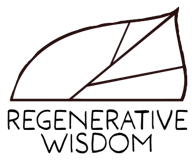Managing Pasture
Pastures cover more land than any other agriculture enterprise around the world. But despite its prevalence, the management of pasture has progressed very little over the last century, with per acre yields of meat and milk remaining stagnant while the yields of grain crops have increased severalfold during the same time period. This ever-widening disparity has led to pasture acres being treated as nothing more than “waste land” that is unsuited to other land uses deemed more profitable, such as grain crops. But is this low productivity an inherent trait of pastured lands, or a result of the minimal level of management (or often simply “mismanagement”) that pastured land typically receives?
Managing Pasture shows how the productivity of pastures can be vastly increased through the understanding and management of the physiology of different pasture plants incorporated into a comprehensive grazing plan to maximize animal production. Best of all, these recommendations for increasing productivity are not based on the increased use of expensive, and often environmentally destructive, inputs such as herbicides and fertilizers. Instead they are based on attention to management details like the amount of leaf area left after a grazing episode and the timing of grazing in relation to season; plant lifecycle and plant growth stage are highlighted. Readers will learn how different plants photosynthesize (no, they don’t all photosynthesize the same: there are several different photosynthetic pathways found in forage plants, and each of them has different advantages and disadvantages), how they respond to grazing, how they are ingested and digested by different animal species, and how to implement grazing systems that optimize health and productivity of both pasture plants and animals. Developing grazing systems that extend the grazing season throughout the entire year and reduce reliance on mechanically harvested feeds and grain is a particular focus.
Differentgroups of grazing plants such as warm-season grasses, cool-season grasses, legumes, forbs, and woody species, as well as their unique management requirements, are described, including both annual and perennial versions of each. Practical and economical methods of pasture management are discussed, such as fencing and water development, as well as dealing with both drought and excess rainfall. The management of individual livestock species is covered, as well as wildlife production from pastures, and producing ecosystem services like clean water and carbon sequestration from pastures.
And last but not least, there is a discussion on the emotional aspects of being a pasture manager, particularly dealing with the ostracism often found when a person eschews the typical recommendations of spraying pesticides and fertilizers to boost production and pursue more regenerative approaches.
Using the techniques found in this book, readers have found ways to increase the production of animal products from their land severalfold over what was achieved with typical status quo management and have, at the same time, increased the ecosystem services provided by their pasture, such as cleaner and more abundant water, more plentiful wildlife, and increased soil carbon content.


